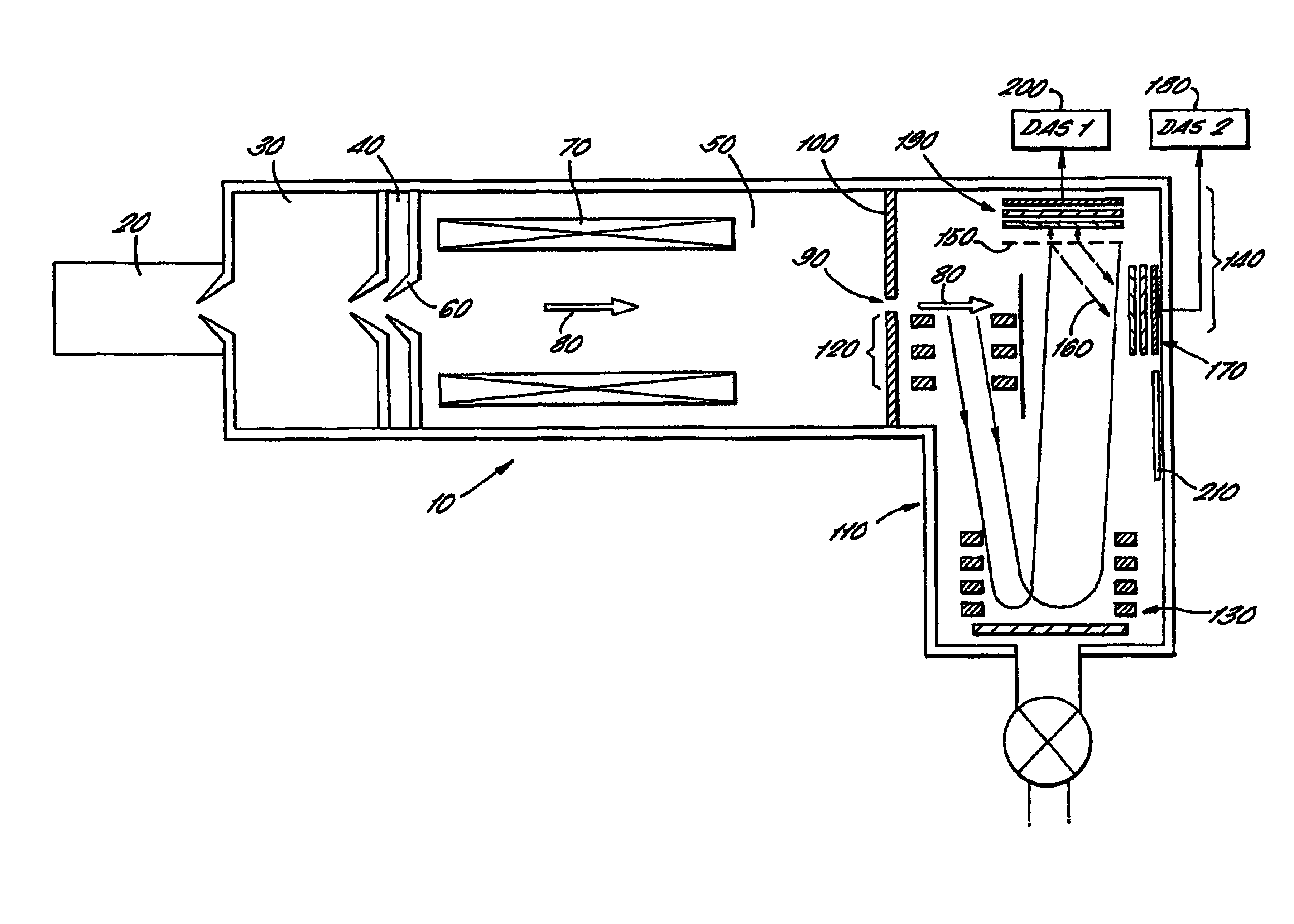Time of flight mass spectrometer and multiple detector therefor
- Summary
- Abstract
- Description
- Claims
- Application Information
AI Technical Summary
Benefits of technology
Problems solved by technology
Method used
Image
Examples
Embodiment Construction
[0031]FIG. 1 shows, in schematic terms, a time-of-flight mass spectrometer (TOFMS) 10. The TOFMS comprises an ion source shown as a representative block 20 in FIG. 1. The ion source may be any suitable continuous or pulsed source, such as an electrospray source, an electron impact source or the like. Indeed, the ion source 20 may in fact be an upstream stage in an ms / ms analysis, e.g. a quadrupole mass spectrometer or an ion trap.
[0032]Gaseous particles from the ion source 20 enter an extraction chamber 30 which is evacuated to a first pressure below atmospheric pressure by a vacuum pump (not shown). The ions exit the extraction chamber 30 into an intermediate chamber 40 which is likewise evacuated, but to a lower pressure than the pressure within the extraction chamber 30, by a second vacuum pump, again not shown. The ions then leave the intermediate chamber 40 and enter a focussing chamber 50 through a conical inlet aperture 60. The focussing chamber 50 contains a series of rods 7...
PUM
 Login to View More
Login to View More Abstract
Description
Claims
Application Information
 Login to View More
Login to View More - R&D
- Intellectual Property
- Life Sciences
- Materials
- Tech Scout
- Unparalleled Data Quality
- Higher Quality Content
- 60% Fewer Hallucinations
Browse by: Latest US Patents, China's latest patents, Technical Efficacy Thesaurus, Application Domain, Technology Topic, Popular Technical Reports.
© 2025 PatSnap. All rights reserved.Legal|Privacy policy|Modern Slavery Act Transparency Statement|Sitemap|About US| Contact US: help@patsnap.com



